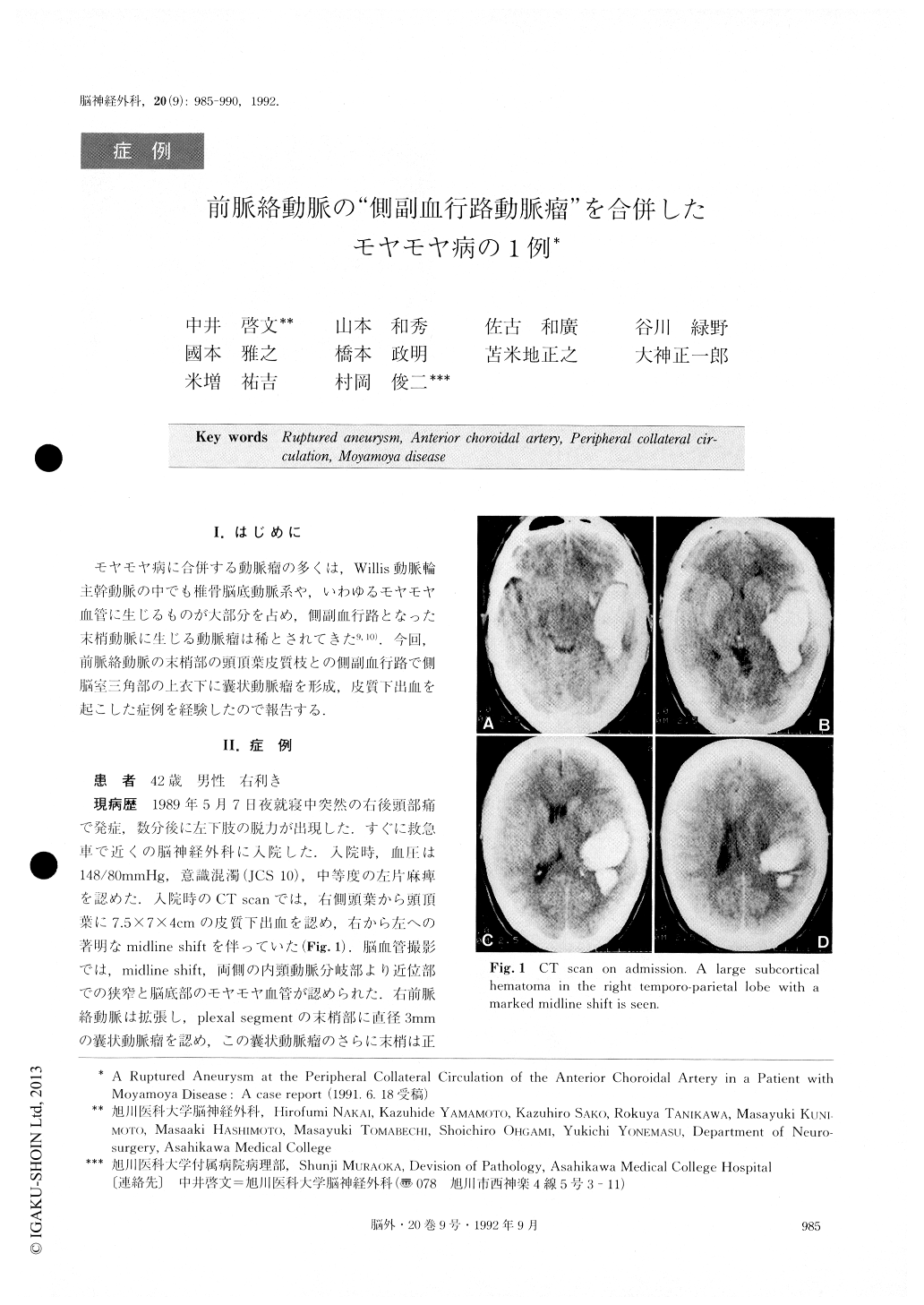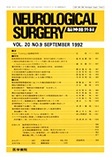Japanese
English
- 有料閲覧
- Abstract 文献概要
- 1ページ目 Look Inside
I.はじめに
モヤモヤ病に合併する動脈瘤の多くは,Willis動脈輪主幹動脈の中でも椎骨脳底動脈系や,いわゆるモヤモヤ血管に生じるものが大部分を占め,側副血行路となった末梢動脈に生じる動脈瘤は稀とされてきた9,10).今回,前脈絡動脈の末梢部の頭頂葉皮質枝との側副血行路で側脳室三角部の上衣下に嚢状動脈瘤を形成,皮質下山血を起こした症例を経験したので報告する.
This 42-year-old man experienced a sudden onset of occipital headache. Neurological examination revealed a moderately disturbed consciousness and a moderate left hemiparesis. CT scan disclosed a huge hematoma in the right tempormparietal lobe without intraventricular hemorrhage. A cerebral angiography demonstrated typical findings of moyamoya disease and a small saccular aneurysm at the peripheral portion of the right anterior choroidal artery, which was dilated at the col-lateral circulation to the parietal lobe. The hematoma was removed at once by a craniotomy. Ile became alert but mild hemiparesis persisted. MRI disclosed a small signal-void lesion lateral to the trigone of the right lateral ventricle. The angiography repeated three weeks after the removal of the hematoma showed the un-changed size of the aneurysm. Direct surgery for the aneurysm was performed via the right parietal trans-cortical approach. The aneurysm was reached under the guidance of the intraoperative angiography. Trap-ping of the parent artery and the excision of the aneurysm were performed. On the basis of the presence of an internal elastic- lamina at the neck of the aneurysm, the surgical specimen was histologic-ally verified to he a true aneurysm. Since the collateral cir-culation was well preserved during surgery, no worsen-ing of the neurological manifestation was observed. In view of the unfavorable prognosis for a moya-moya patient with this type of the aneurysm, which often results in a massive ventricular or intracerebral hemorrhage, surgery directed to the aneurysm itself should he considered.

Copyright © 1992, Igaku-Shoin Ltd. All rights reserved.


